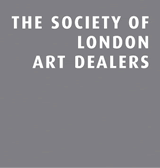Claude-Émile Schuffenecker (1851 - 1934)
Vue de la Côte Normande
Request Viewing
Oil on canvas
58 x 69 cm (22 ⁷/₈ x 27 ¹/₈ inches)
Signed and dated lower right, E. Schuffenecker 90
-
-
-
-
Description
This work is accompanied by a certificate of authenticity from Mrs Jill Elyse Grossvogel.
This artwork by Claude-Émile Schuffenecker is available for immediate purchase.
Artist's Biography
French Post-Impressionist Claude Émile Schuffenecker, was born in 1851 in Fresne-Saint-Mamès, Eastern France. Following the death of his father when he was just two years old, his family resettled in Meudon, where he was raised by his aunt in Paris – a city that would remain his lifelong home.
In 1872, Schuffenecker began his career in a stock brokerage, and it was there that he forged a lasting friendship with none other than Paul Gauguin. Both enrolled at the Académie Suisse, their shared passion for art led them on frequent visits to the Louvre, where they studied the works of the Old Masters. Schuffenecker regularly attended life drawing classes and socialised with the likes of Armand Guillaumin and Camille Pissarro.
In 1882, during the aftermath of the stock market crash in Paris, Schuffenecker made the decision to leave his financial occupation, committing to an artistic career. By 1884 Schuffenecker co-founded the Société des Artistes Indépendants alongside Albert Dubois-Pillet, Odilon Redon, Georges Seurat and Paul Signac. Through his involvement, Schuffenecker established a strong relationship with Seurat, whose ideas on Neo-impressionism became a strong influence on his work.
Notably, he participated in the eighth and final Impressionist exhibition in 1886 and played a crucial role in establishing The Volpini Exhibition in 1889, situated on the grounds of the Exposition Universelle on the Champs-de-Mars in Paris. This exhibition featured works by prominent artists such as Gauguin, Émile Bernard, Louis Roy, and Schuffenecker himself. Furthermore, Schuffenecker's impact was highlighted by his solo exhibition held at the Librarie de l’Art Indépendant in Paris in 1896. This showcase included seventeen paintings, twenty-one pastels, and three drawings.
From the mid 1880s to early 1890s, Schuffenecker was greatly inspired by landscapes, specifically coastal views in Étretat and Yport in Normandy. He wished to capture the fluctuations of sunlight over the cliffs, sea and sand. Schuffenecker’s most accomplished works were in this style and are characterised by a vibrant and unique palette of pinks, lilacs, blues, purples and light greens. Count Antoine de la Rochefoucauld artist and art collector described Schuffenecker’s approach: ‘He, who more than anyone has a perpetually agitated soul, has created works of sheer joy. His soul permanently soars, and from where the dazzling, impulsive divine force reigns, he brings back artistic themes as subtle as the ether itself in which he has flown’.
Alongside his career as an artist, Schuffenecker applied for a diploma to teach fine art in 1882. Two years later, he was appointed to teach drawing at the Lycée Muchelet in Vanves with Louis Roy. After teaching for 30 years, Schuffenecker left the institution in 1914.
Schuffenecker died in Paris in 1934.











